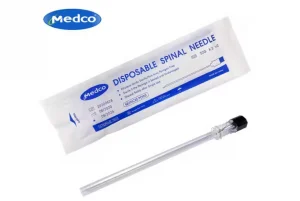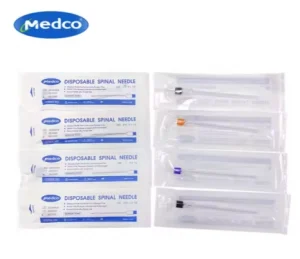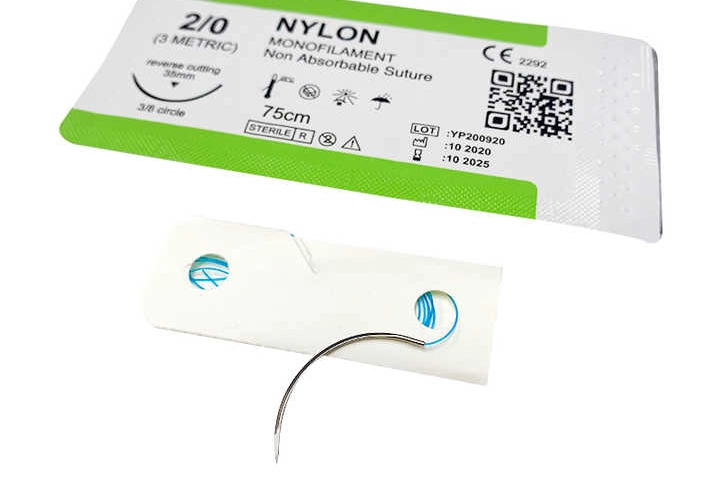
Navigating the Basics of the 18g Spinal Needle
Key Features of the 18g Spinal Needle
An 18g spinal needle is a long, thin medical instrument used for accessing the spinal region more precisely than with other needles. Wide-bore design enables a high flow rate for cerebrospinal fluid sampling or drug delivery. A style, to preserve the integrity of the needle shaft during insertion and avoid tissue occlusion, is often included in needle designs. The bevel is sharp so that when it penetrates tough tissues, the patient experiences the least discomfort and trauma.
Common Applications in Medical Procedures
An 18g spinal needle is a staple of medicine. Lumbars are mainly used for lumbar punctures and the collection of cerebrospinal fluid samples to diagnose meningitis or multiple sclerosis This is used for spinal anesthesia during surgery, to provide effective analgesia without losing consciousness. Furthermore, the needle is employed in procedures like myelography and chemotherapy, which require specific injections of contrast agents or drugs into the spinal canal area.
Advantages of Using an 18g Spinal Needle
Using an 18g spinal needle has some advantages. Due to a larger gauge, it makes fluid withdrawal or medication delivery quicker more time-saving, and more efficient. A durable needle reduces the likelihood of bending or breaking when insertion is performed, making the procedure safer for the patient and the practitioner. Additionally, that design mitigates other post-procedural issues like headache or bleeding, so that it is easier to heal from there. These advantages render an 18g spinal needle a common choice for spinal procedures among medical professionals.
Techniques for Effective Use of the 18g Spinal Needle
Preparing for the Procedure
Essential Equipment and Tools
All material necessary for any procedure in which a spinal needle is an 18g must be in order before doing any of this. Items such as clean gloves, antiseptic solutions, gauze pads, local anesthetic agents, and a cerebrospinal fluid collection kit if necessary. Keeping all the instruments sterilized and often accessible to avoid any delay during the procedure also reduces the risk of an infection.
Patient Positioning and Preparation
When utilizing an 18g spinal needle correct positioning of the patient is imperative to the outcome In its usual practice, the procedure requires a lateral decubitus position of the patient’s knees in a flexed position up to the upper chest to get maximal access to the intervertebral space. Or, practitioners can use a forward flexed sitting position depending on the practitioner or patient’s comfort. Proper antiseptic cleaning of the skin reduces infection risk at the site of puncture.
Insertion Techniques
Angle and Depth Considerations
Complications, such as blood collection, can also occur during the insertion of the spinal needle, so precise manipulation of the angle and depth of the needle must be performed, especially with an 18g spinal needle. The insertion angle is usually 10 to 15 degrees from perpendicular to the surface of the skin, in the direction of the umbilicus. Depth of penetration depends on the patient’s anatomy but is usually between 4 and 6 centimeters until resistance is felt at the subarachnoid space. Practitioners must take care not to do too much, lest they hurt nerves or cause other issues.
Avoiding Common Complications
Best practices during the procedure can ensure the problems with an 18g spinal needle are reduced. If your hands are stable during insertion, it can reduce the risk of dural tear and nerve injury. By aspirating regularly before advancing, proper placement can be confirmed by using the avoidance of damage to living tissue spaces that you don’t want to enter. Keeping a close eye on how your patient responds means you can jump in at the first signs of trouble if they experience discomfort outside of expectations.
Medco offers in its supplier list, a leader in the industry of medical supplies used around the world, enhancing patient-oriented precautions with every step.
Enhancing Precision with Advanced Tips
Improving Accuracy in Needle Placement
Utilizing Anatomical Landmarks
An 18g spinal needle is inserted with an emphasis on accuracy. By using anatomical landmarks, practitioners can guide themselves more accurately. Landmarks are obvious points of sight and touch to guide insertions to appropriate paths to minimize complications. In the case of lumbar punctures, If the person is supine, the location of the iliac crests can be used to identify the location of the L3-L4 or L4-L5 intervertebral spaces, which are suitable sites for entry into the subarachnoid space. The practitioner well acquainted with these landmarks can confidently access the anatomy of interest and achieve desired clinical outcomes.
Real-time Imaging Guidance
Needle placement is also further refined with real-time imaging guidance. Other methods — ultrasound or fluoroscopy — also provide dynamic views of the spinal structures, so practitioners can adjust their approach accordingly. It helps to ensure that the needle is entered in the right path and depth to prevent misplacement and tissue damage. When healthcare professionals use the 18g spinal needle, having imaging guidance makes them land higher in their accuracy rates, and thus the patients will be safer during their spinal procedures.
Managing Patient Comfort and Safety
Pain Management Strategies
One important aspect is patient comfort during the 18g spinal needle procedures. Knowing how to manipulate pain can vastly improve patient experience and compliance. Local anesthesia is given at the puncture site to numb the area and decrease pain during needle insertion. Other methods such as slowly and gradually advancing the needle help in lowering the level of pain. Talking to the patient during the procedure can help reduce anxiety and keep them as comfortable as possible.
Monitoring for Adverse Reactions
The safety of using an 18g spinal needle in patients depends on vigilant monitoring for adverse reactions. Early warning of signs of complications to practitioners such as headache, bleeding, or nerve irritation after surgery. If any negative response becomes evident, it is imperative to step in as soon as possible to avert escalation and reach a prompt resolution. Having a culture that emphasizes proactive monitoring and immediate action allows the team to protect the patient from potential harm from spinal interventions.
Exploring Medco’s Innovations in Medical Instruments
Overview of Medco’s Product Line
Bringing you the latest in medical instrument innovation, Medco offers a full range of quality medical products, in stock and ready to go. Their attention to detail and strict quality control process show their commitment to excellence. They pay meticulous attention to detail and enforce strict quality control processes.
Spinal Needle
Medco’s precision-engineered spinal needles are well-known and trusted by clinicians. This commitment to quality is highlighted within the 18g spinal needle, a design that aims to increase procedural efficiency without compromising patient safety. Designed to be strong, it will remain in one piece for the duration of use, and you won’t have to worry about it bending or breaking.
Hypodermic Syringe
Medco provides spinal needles along with various hypodermic syringes for specific different medical purposes. Designed for precision and ease of use by healthcare professionals, these syringes deliver the correct dosages. Designed with patient quality of care in mind, Medco’s hypodermic syringes assist good practice, whether they are positive for medication delivery or attractive for fluid withdrawal.




